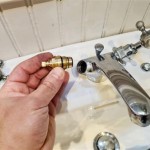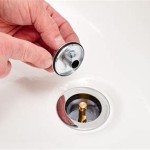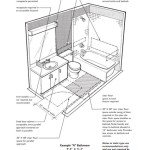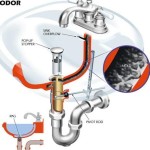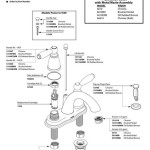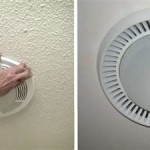Why Does My Bathroom Feel Damp?
A persistently damp bathroom presents a significant challenge for homeowners. Beyond the immediate discomfort, a damp environment fosters mold and mildew growth, degrades structural elements, and can contribute to respiratory problems. Pinpointing the source of this dampness is crucial for implementing effective solutions and maintaining a healthy, comfortable living space.
Identifying the root cause of the dampness often requires a systematic approach. The presence of persistent moisture can stem from a variety of sources, ranging from inadequate ventilation to hidden plumbing leaks. Addressing the symptoms without diagnosing the underlying issue will likely result in a recurring problem and potentially more extensive damage in the long run.
Inadequate Ventilation: A Primary Culprit
Perhaps the most common contributor to bathroom dampness is insufficient ventilation. Bathrooms, by their very nature, are high-humidity environments. Showers, baths, and even handwashing release significant amounts of water vapor into the air. Without adequate airflow, this moisture becomes trapped, leading to that characteristic damp feeling and providing a breeding ground for mold and mildew.
Bathroom ventilation systems are designed to expel this moisture-laden air to the outside. These systems typically consist of an exhaust fan that is ducted to an exterior vent. The efficacy of this system hinges on several factors, including the fan's capacity, the duct's design and condition, and the user's habits.
The capacity of the exhaust fan is measured in cubic feet per minute (CFM). A general rule of thumb is that a bathroom requires at least 1 CFM per square foot of floor space. Therefore, a 50-square-foot bathroom should have a fan rated for at least 50 CFM. More powerful fans may be necessary for larger bathrooms or those with high ceilings. The Home Ventilating Institute (HVI) provides more detailed guidelines for determining the appropriate fan size based on specific bathroom features and usage patterns.
The ductwork connecting the exhaust fan to the exterior vent is equally important. A long, convoluted duct run significantly reduces the fan's effective CFM. Smooth, rigid ductwork is preferable to flexible, corrugated ductwork, as the latter creates more resistance to airflow. Additionally, the duct must be properly insulated, especially in colder climates, to prevent condensation from forming inside the duct and dripping back into the bathroom. Blocked or damaged ductwork can also severely restrict airflow, rendering the exhaust fan ineffective.
Even with a properly sized and installed exhaust fan, user habits play a crucial role. It is essential to run the exhaust fan during and for at least 20 minutes after each shower or bath. This allows the fan to effectively remove the moisture generated during these activities. Neglecting to use the fan consistently will inevitably lead to a build-up of humidity and a damp bathroom environment. Opening a window is alternative ventilation method, but it might not be available during cold weather. In this case, even if window is opened, exhaust fan usage is highly recommended.
Furthermore, ensure that the bathroom door is slightly ajar during and after showering to allow for cross-ventilation. While the exhaust fan pulls moisture out, fresh air needs to enter for it to function optimally. A small gap under the door is usually sufficient.
Plumbing Leaks: A Subterranean Source of Moisture
Hidden plumbing leaks represent another significant source of bathroom dampness. Leaks behind walls, under floors, or around fixtures can introduce a constant supply of moisture into the bathroom environment. These leaks may be subtle and go unnoticed for extended periods, allowing the moisture to accumulate and contribute to a damp atmosphere.
Potential leak locations are numerous. Supply lines to sinks, toilets, and showers are prime suspects. Check the connections under sinks for drips or signs of water damage. Inspect the base of the toilet for any water pooling or discoloration. Examine showerheads and faucets for leaks around their seals.
Drain lines are also susceptible to leaks. Look for signs of water damage around drainpipes under sinks and showers. Hair and debris can accumulate in drain lines, creating blockages that lead to leaks. A musty odor can often be a telltale sign of a hidden drain leak.
Toilet leaks can be particularly insidious. A leaking toilet flapper valve can constantly allow water to trickle from the tank into the bowl, resulting in wasted water and a damp bathroom. This type of leak may not be immediately obvious, but you can often detect it by listening for the sound of running water when the toilet is not in use.
Pinpointing the source of a hidden leak can be challenging. Water can travel along pipes and structural elements, making it difficult to trace the leak back to its origin. In some cases, it may be necessary to hire a professional plumber to conduct a leak detection test. These tests typically involve pressurizing the plumbing system and using specialized equipment to locate any leaks.
Addressing plumbing leaks promptly is crucial not only to eliminate bathroom dampness but also to prevent more extensive water damage. Leaks can rot wood framing, damage drywall, and create conditions conducive to mold growth. Regular inspections of plumbing fixtures and prompt repairs are essential for maintaining a dry and healthy bathroom.
Surface Permeability and Condensation: Often Overlooked Factors
The materials used in bathroom construction can also contribute to dampness. Porous surfaces, such as unsealed grout or untreated drywall, can absorb moisture from the air, leading to a damp feeling and potentially fostering mold growth. Furthermore, condensation on cold surfaces can introduce a significant amount of moisture into the bathroom environment.
Grout, the material that fills the gaps between tiles, is naturally porous. Without proper sealing, grout can readily absorb water and become a breeding ground for mold and mildew. Regularly sealing grout with a quality grout sealer is essential for preventing moisture penetration and maintaining a clean, dry bathroom surface. Cleaning grout regularly with a bleach-based cleaner can also help to prevent mold growth.
Drywall, while commonly used in bathroom construction, is also susceptible to moisture damage. Untreated drywall can absorb moisture from the air, causing it to swell, crumble, and eventually fail. Using moisture-resistant drywall, often referred to as "green board" or "blue board," in bathrooms is highly recommended. These types of drywall are treated to resist moisture penetration and are less likely to develop mold growth.
Condensation occurs when warm, moist air comes into contact with a cold surface. In bathrooms, condensation is particularly common on mirrors, windows, and tile surfaces. The amount of condensation that forms depends on the temperature difference between the air and the surface, as well as the humidity level in the bathroom.
Several strategies can help to minimize condensation in the bathroom. Running the exhaust fan during and after showers will help to reduce the humidity level. Maintaining a consistent temperature in the bathroom can also help to reduce condensation. Insulating exterior walls and windows can help to prevent cold surfaces from forming. Heated towel rails or underfloor heating can also help to warm surfaces and reduce condensation.
In addition, consider using a dehumidifier in the bathroom, especially during periods of high humidity. A dehumidifier can remove excess moisture from the air, helping to prevent condensation and reduce the overall dampness in the bathroom. Dehumidifiers are rated by their capacity, which is the amount of water they can remove from the air in a 24-hour period. Choose a dehumidifier with a capacity that is appropriate for the size of your bathroom.
Addressing surface permeability and condensation requires a combination of preventive measures and ongoing maintenance. By sealing grout, using moisture-resistant materials, and minimizing condensation, homeowners can create a drier, healthier bathroom environment.
Beyond these primary causes, other factors can contribute to bathroom dampness. Improperly installed shower doors or curtains can allow water to escape, leading to moisture build-up. Leaking toilets can introduce a constant supply of water into the bathroom environment. Even frequent use of humidifiers can over-saturate the air, contributing to dampness.
In conclusion, resolving a damp bathroom requires a thorough investigation to identify the underlying cause. Addressing ventilation issues, repairing plumbing leaks, and managing surface permeability and condensation are all essential steps toward creating a dry, comfortable, and healthy bathroom environment. Regular maintenance and prompt attention to any signs of dampness will help to prevent future problems and protect your home from water damage.

How To Stop Damp In Bathroom Expert Guide From Timberwise

How To Stop Damp In Bathroom Expert Guide From Timberwise

Why Is My Bathroom Always Humid Air Boca

Bathroom Mold How To Kill On Ceiling

Why Does My House Feel Damp When It Rains Timberwise

What To Know About Bathroom Mold And When You Should Worry

What Causes Damp In Bedroom How To Stop It Helpful Advice

How To Prevent Bathroom Damage From Hot Steam And Condensation 5 Ways Express Co

10 Ways To Reduce Humidity In The Bathroom Point2 News

Why Does My House Feel Damp When It Rains
Related Posts


